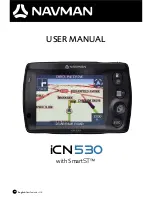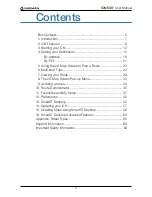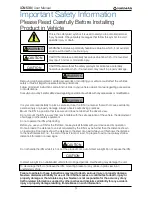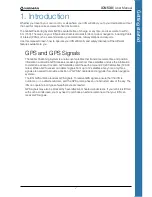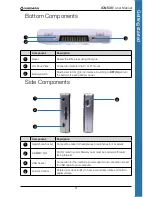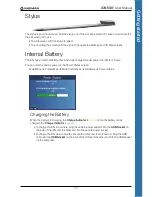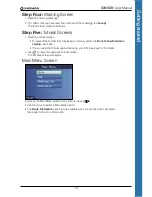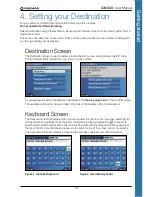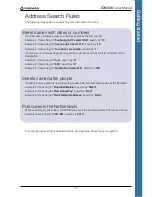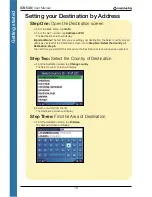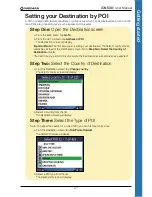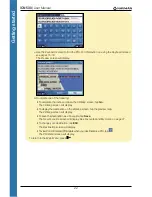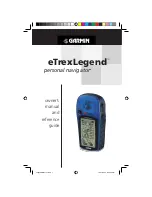
7
iCN 530
|
User Manual
G
et
tin
g s
ta
rte
d
1. Introduction
Whether you travel in your own country or elsewhere, your iCN will direct you to your destination without
the need for map-books and second-hand instructions.
The Global Positioning System (GPS) is available free of charge, at any time, and is accurate to within
5 m (15 ft). The maps on your iCN provide street-level detail for door-to-door navigation, including Points
of Interest (POIs) such as accommodation, petrol stations, railway stations and airports.
Use this manual to learn how to operate your iCN efficiently and safely; discover all the different
features available to you.
GPS and GPS Signals
The Global Positioning System is a network of satellites that transmit accurate time and position
information worldwide. GPS receivers receive signals from these satellites and use the information
to determine an exact location. GPS satellites orbit the earth at around 20,200 kilometres (12,000
miles). While a GPS receiver can detect signals from up to 12 satellites at any time, only three
signals are needed to provide a position or “GPS fix” (latitude and longitude) for vehicle navigation
systems.
The iCN GPS antenna receives GPS signals. To receive GPS signals, ensure that the iCN is
outdoors, or in a vehicle outdoors, and the GPS antenna has an unobstructed view of the sky. The
iCN can operate in all types of weather except snowfall.
GPS signals may also be blocked by heat-reflective or heated windscreens. If your vehicle is fittted
with such a windscreen, you may need to purchase an external antenna so that your iCN can
receive GPS signals.
Содержание SmartS iCN530
Страница 1: ...with SmartS iCN530 English New Zealand UK USER MANUAL en...
Страница 6: ...6 iCN 530 User Manual Getting started...
Страница 70: ...70 iCN 530 User Manual...
Страница 71: ......
Страница 72: ...MN000550B G...

